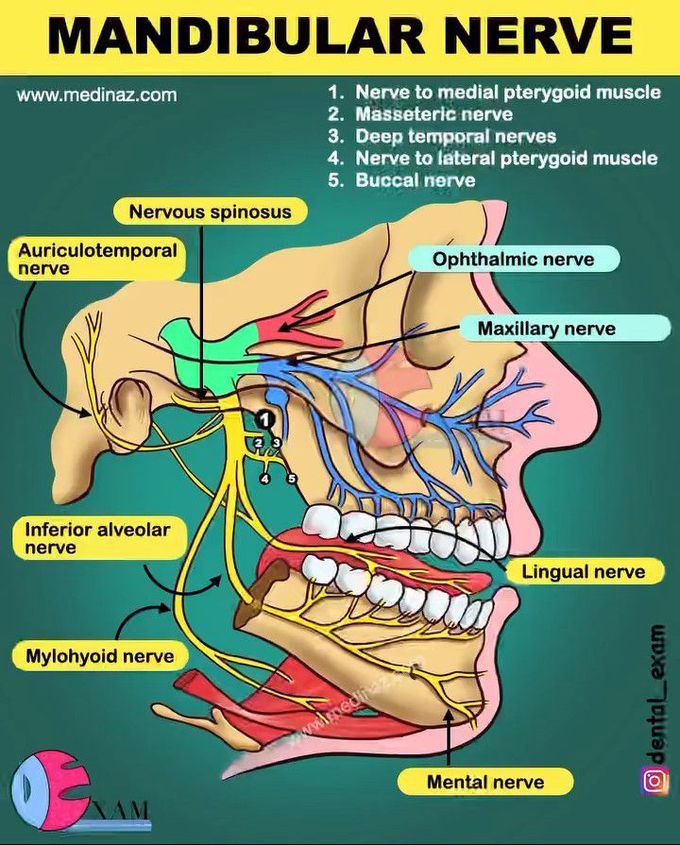Branches of mandibular nerve to otic ganglion - e-Anatomy - IMAIOS
Por um escritor misterioso
Last updated 31 dezembro 2024

The neuronal branches of mandibular nerve to otic ganglion come via its sensory, parasympathetic, sympathetic and motor roots.Please note that the otic ganglion is a parasympathetic ganglion formed by cell bodies of postganglionic parasympathetic fibers. It is situated close to the main trunk of the mandibular nerve (V3), inside the infratemporal fossa and just inferior to the foramen ovale.Sensory root: The auriculotemporal nerve–which is a branch of the posterior division of mandibular nerve (V3)–gives off a sensory root to the otic ganglion. Some general somatic sensory neurons from the capsule and fascia of parotid gland, pass ‘unrelayed’ through the otic ganglion and its sensory root to reach the auriculotemporal nerve. These sensory neurons transmit sensations of pain, touch, temperature and pressure and end up as far as the sensory trigeminal ganglion via this route.Parasympathetic root: The parasympathetic root to otic ganglion is secretomotor and comes off from the lesser petrosal nerve. The preganglionic parasympathetic neurons follow the following route to reach the otic ganglion:Origin from the inferior salivatory nucleus of facial nerve > via tympanic branch of glossopharyngeal nerve > tympanic plexus (middle ear) > lesser petrosal nerve (passes via foramen ovale) > otic ganglion (in infratemporal fossa).Next, the post-ganglionic neurons from the otic ganglion hop onto the auriculotemporal nerve–a branch of V3–to end up providing secretomotor innervation to the parotid gland mainly.Sympathetic root: The sympathetic root arises from the sympathetic plexus around the middle meningeal artery. It contains post-ganglionic sympathetic neurons which arise from the superior cervical ganglion. They pass through otic ganglion without relay and hop onto the auriculotemporal nerve. Here, they run along with the postganglionic sympathetic neurons to eventually end up reaching the parotid gland. Sympathetics lead to vasoconstriction of parotid vessels, thus decreasing secretions.Motor root: The nerve to medial pterygoid muscle–which is a branch of the main trunk of V3–gives off a motor root to the otic ganglion. Some somatic motor neurons from the V3 reach the otic ganglion via the motor root. These efferent neurons pass ‘unrelayed’ through the ganglion and end up innervating two muscles, including the tensor tympani and the tensor veli palatini muscles.
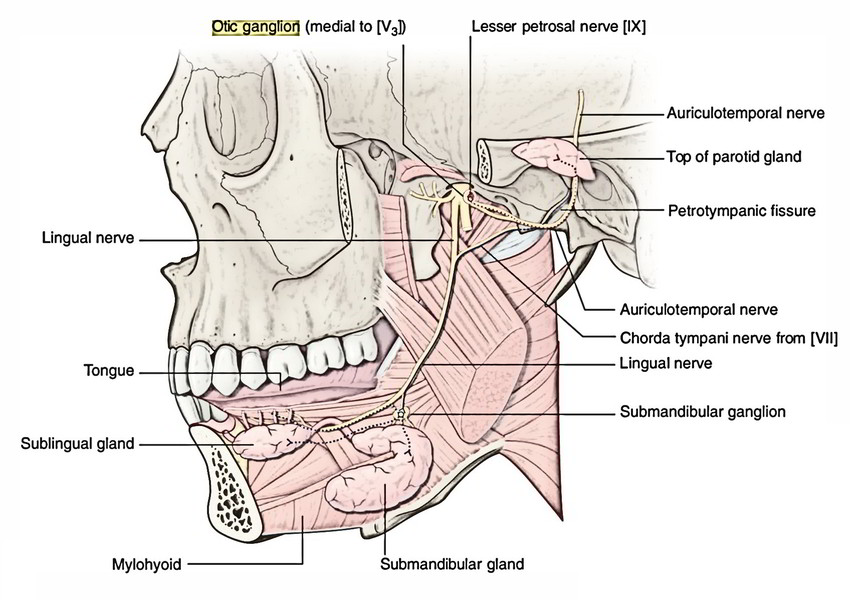
Otic Ganglion – Earth's Lab

Otic ganglion - e-Anatomy - IMAIOS

Tubal branch of tympanic nerve - e-Anatomy - IMAIOS

Otic ganglion - e-Anatomy - IMAIOS

Foramen Ovale content (OVALE) Flashcards

Otic Ganglion , Location, Roots or Connections and Branches
What function does the trochlear nerve have? - Quora

Mandibular nerve - e-Anatomy - IMAIOS

Illustrations and diagrams of the 12 pairs of cranial nerves

Orbital branches of maxillary nerve - e-Anatomy - IMAIOS

Mandibular nerve branches Diagram
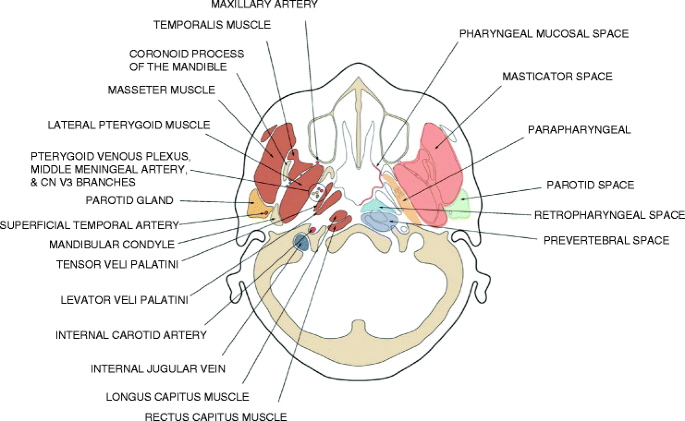
Head and Neck
Recomendado para você
-
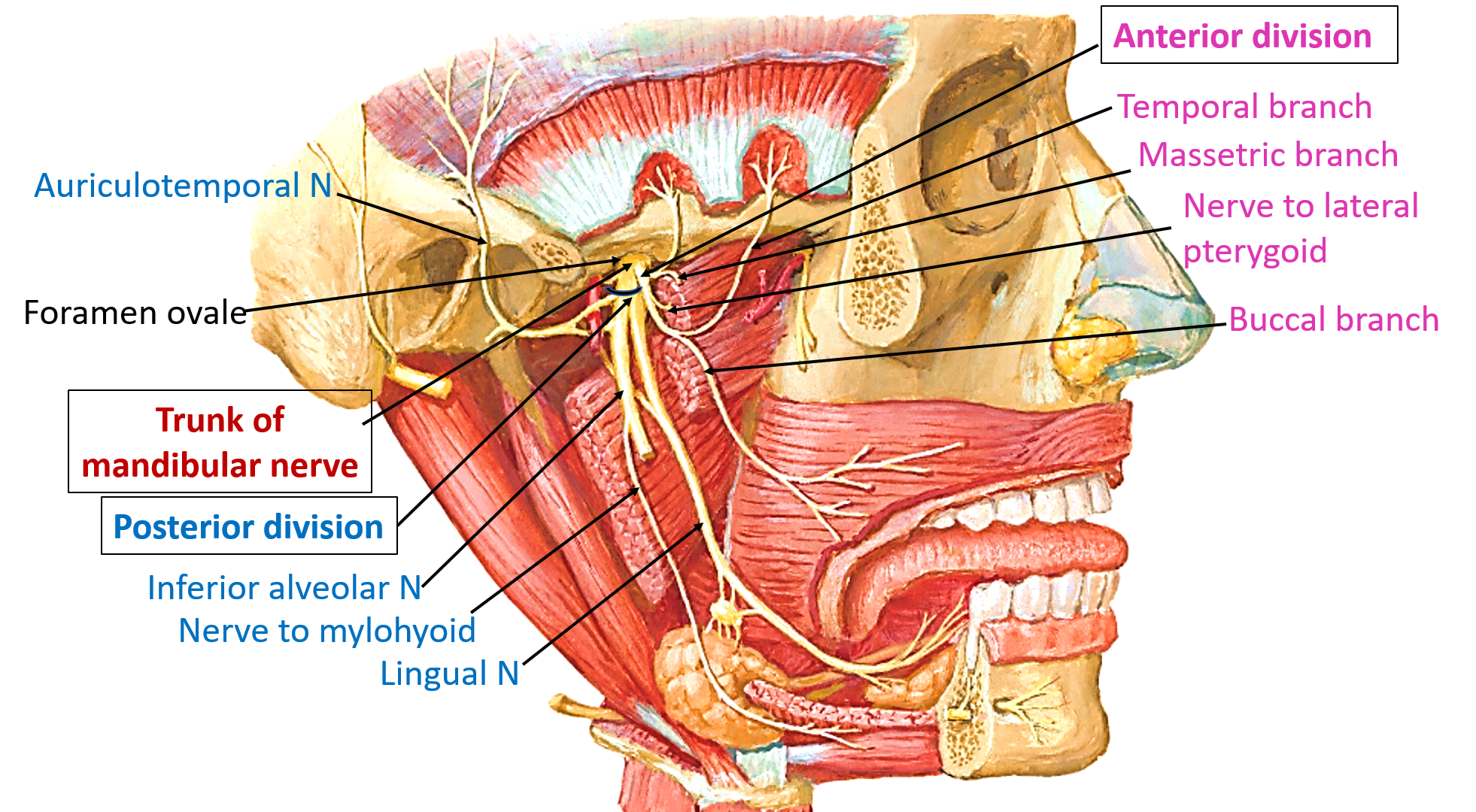 Mandibular nerve , Anatomy QA31 dezembro 2024
Mandibular nerve , Anatomy QA31 dezembro 2024 -
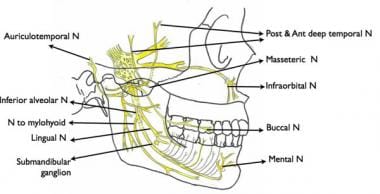 Mandibular Nerve Block: Background, Indications, Contraindications31 dezembro 2024
Mandibular Nerve Block: Background, Indications, Contraindications31 dezembro 2024 -
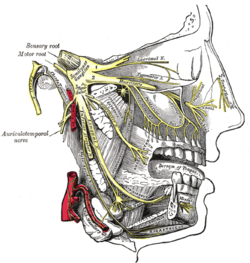 Inferior alveolar nerve - Wikipedia31 dezembro 2024
Inferior alveolar nerve - Wikipedia31 dezembro 2024 -
Branches of the Mandibular Nerve - MEDizzy31 dezembro 2024
-
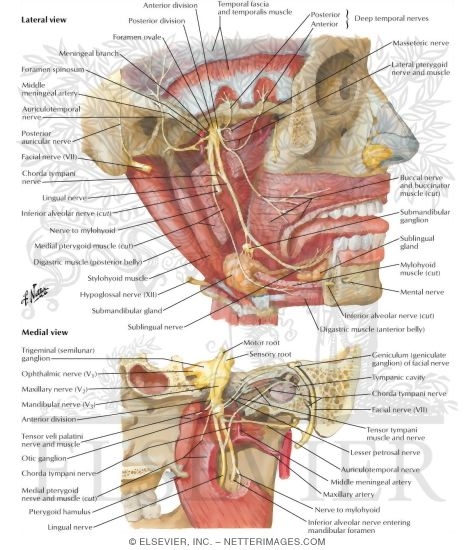 Mandibular Nerve (V3)31 dezembro 2024
Mandibular Nerve (V3)31 dezembro 2024 -
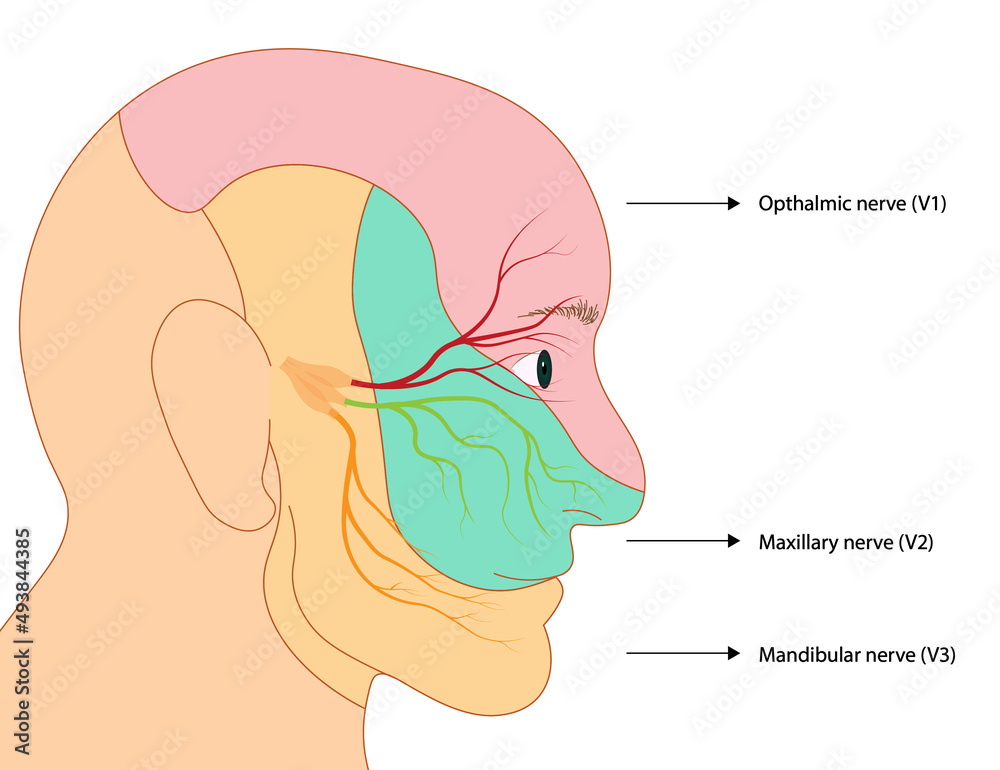 Trigemial nerve illustration. Ophtalmic, Maxillary and mandibular nerve Stock Illustration31 dezembro 2024
Trigemial nerve illustration. Ophtalmic, Maxillary and mandibular nerve Stock Illustration31 dezembro 2024 -
 Mandibular nerve - Gross Anatomy31 dezembro 2024
Mandibular nerve - Gross Anatomy31 dezembro 2024 -
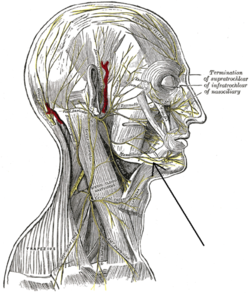 Marginal mandibular branch of the facial nerve - Wikipedia31 dezembro 2024
Marginal mandibular branch of the facial nerve - Wikipedia31 dezembro 2024 -
 Figure 2 from The Mandibular Nerve: The Anatomy of Nerve Injury and Entrapment31 dezembro 2024
Figure 2 from The Mandibular Nerve: The Anatomy of Nerve Injury and Entrapment31 dezembro 2024 -
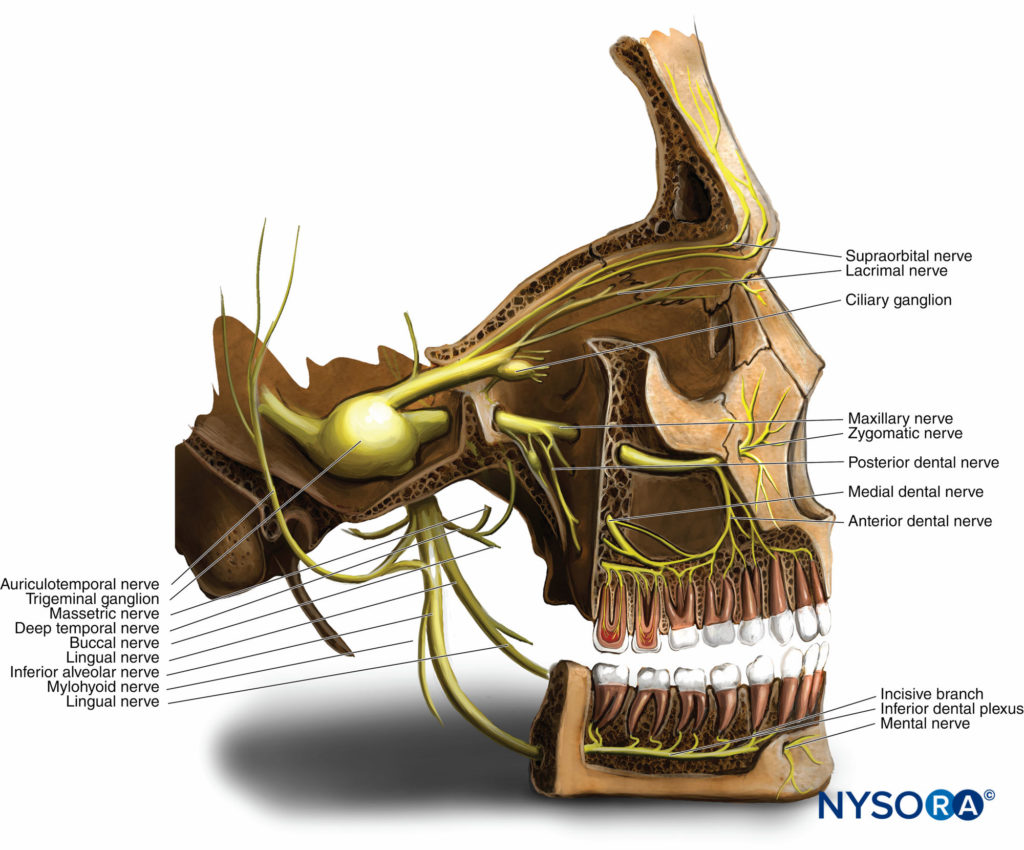 Oral & Maxillofacial Regional Anesthesia - NYSORA31 dezembro 2024
Oral & Maxillofacial Regional Anesthesia - NYSORA31 dezembro 2024
você pode gostar
-
 Bing Crosby - True Love (Ft Grace Kelly) Lyrics31 dezembro 2024
Bing Crosby - True Love (Ft Grace Kelly) Lyrics31 dezembro 2024 -
 Fantasia Arlequina em 2023 Fantasias femininas, Fantasias31 dezembro 2024
Fantasia Arlequina em 2023 Fantasias femininas, Fantasias31 dezembro 2024 -
Futebol Épico - Lista de jogos a concurso no Angofoot para o dia (19-10): 666 (17) WEST BROMWICH ALBION - BURNLEY FC (18) 650 (8) LEEDS UNITED AFC - WOLVERHAMPTON WANDER (13)31 dezembro 2024
-
 My Book of Little House Paper Dolls by Laura Ingalls Wilder, Renee Graef, Paperback31 dezembro 2024
My Book of Little House Paper Dolls by Laura Ingalls Wilder, Renee Graef, Paperback31 dezembro 2024 -
 GIANT KILLING - O MELHOR ANIME DE FUTEBOL - CAVEIRA INDICA31 dezembro 2024
GIANT KILLING - O MELHOR ANIME DE FUTEBOL - CAVEIRA INDICA31 dezembro 2024 -
 ʟᴀʟᴀɪɴᴇ on X: BUZZER BEAT (2009) “Love makes people strong”… The story of a timid basketball player and a strong-willed violinist reaching for their dreams. #ブザービート #山下智久 #北川景子 / X31 dezembro 2024
ʟᴀʟᴀɪɴᴇ on X: BUZZER BEAT (2009) “Love makes people strong”… The story of a timid basketball player and a strong-willed violinist reaching for their dreams. #ブザービート #山下智久 #北川景子 / X31 dezembro 2024 -
 Chess Master stock photo. Image of person, intelligent - 3630303031 dezembro 2024
Chess Master stock photo. Image of person, intelligent - 3630303031 dezembro 2024 -
 Star Wars Controversy – What Is It With the Rotten Tomatoes Score31 dezembro 2024
Star Wars Controversy – What Is It With the Rotten Tomatoes Score31 dezembro 2024 -
 Vetores de Boca De Desenho Animado Com Os Dentes e mais imagens de Boca - Boca, Revista em quadrinhos - Produção artística, Sorrindo - iStock31 dezembro 2024
Vetores de Boca De Desenho Animado Com Os Dentes e mais imagens de Boca - Boca, Revista em quadrinhos - Produção artística, Sorrindo - iStock31 dezembro 2024 -
![Minecraft PE mobile Download for Android & iOS [Latest update]](https://apkrey.com/wp-content/uploads/2020/04/Minecraft-Mod-APK-1-696x392.jpg) Minecraft PE mobile Download for Android & iOS [Latest update]31 dezembro 2024
Minecraft PE mobile Download for Android & iOS [Latest update]31 dezembro 2024
